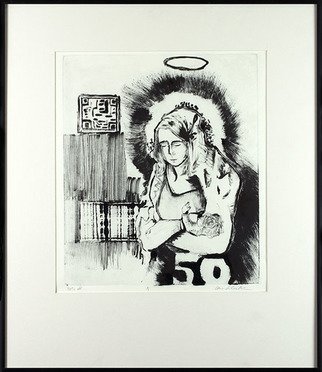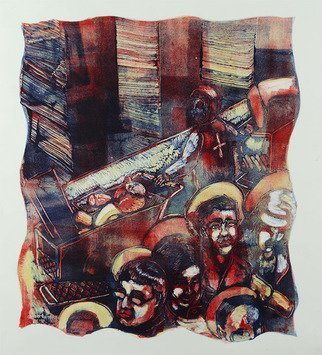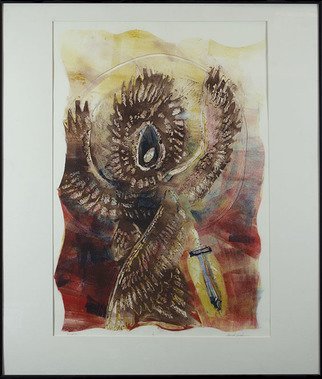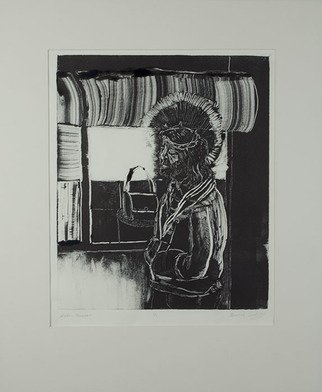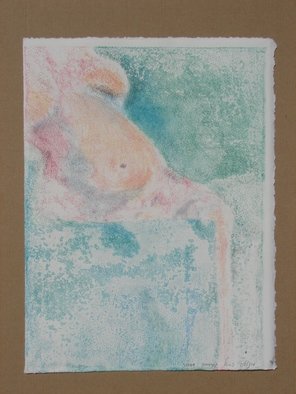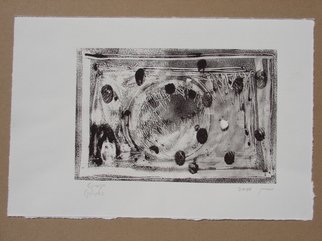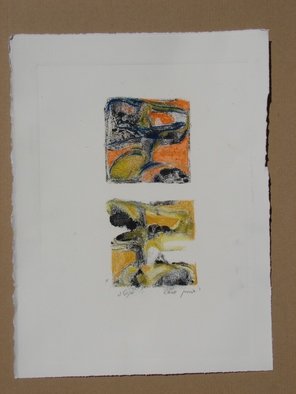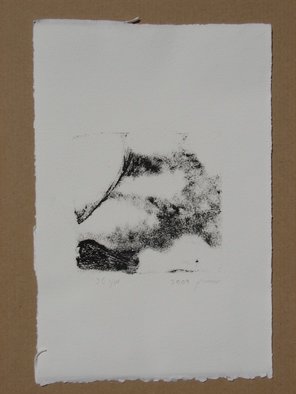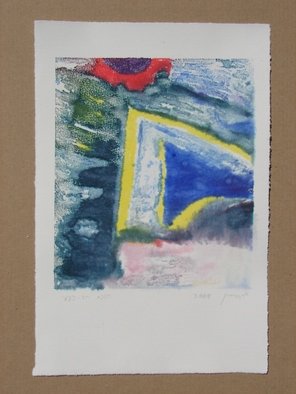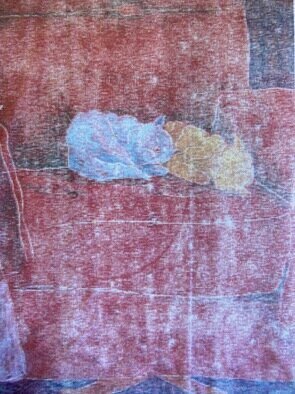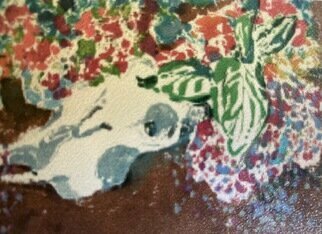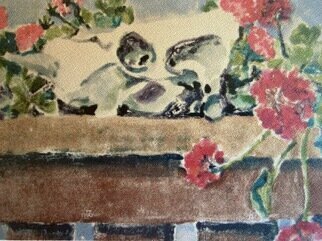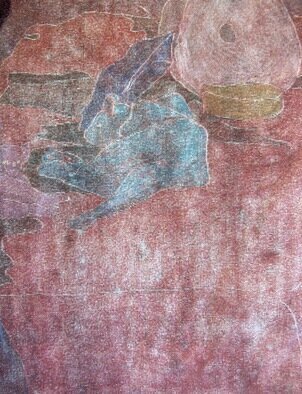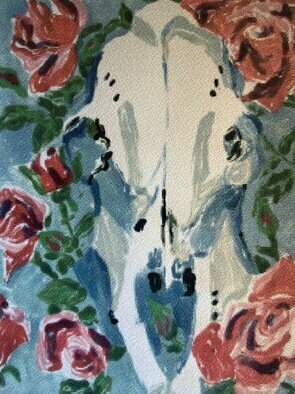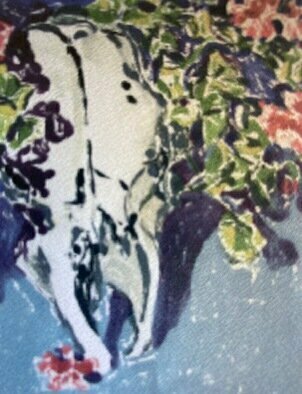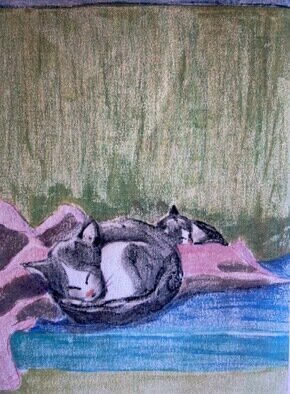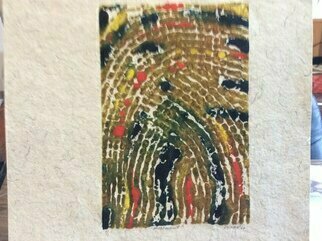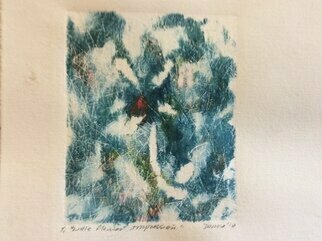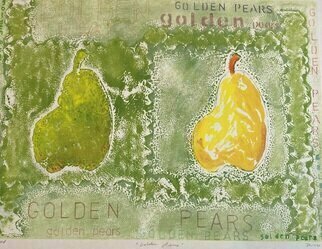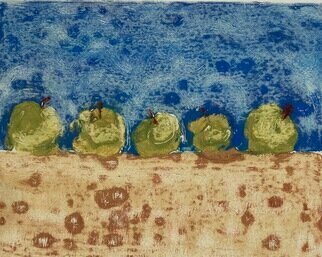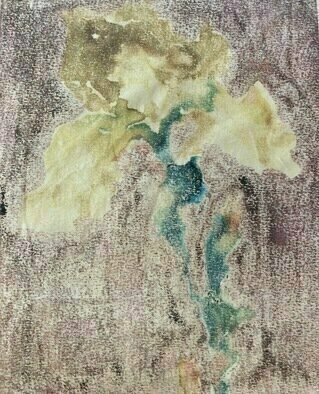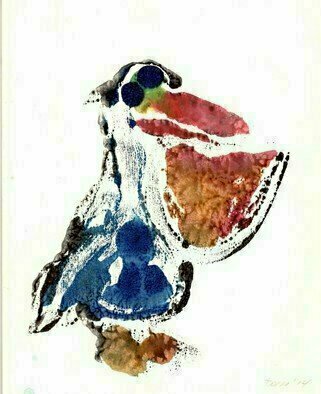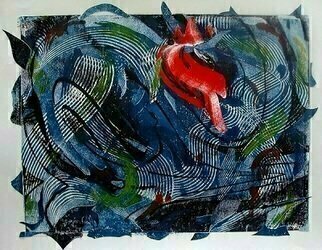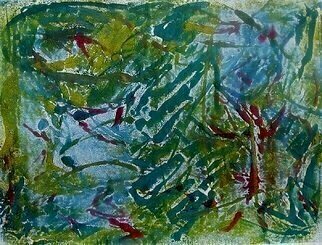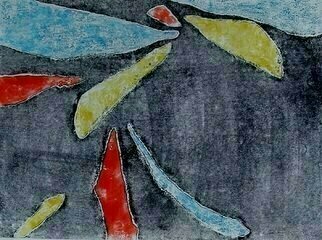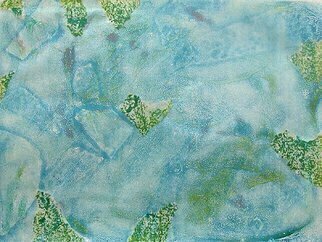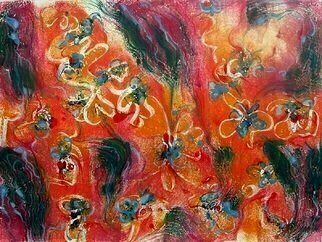Monoprints
Page 3 of 6

Dana Zivanovits, Amanda Coakley, Tamara Sorkin, Donna Gallant offering original Monoprints artworks.
Amanda Coakley - As an atheist I have always looked at religion from the position of an observer rather than a practitioner. When I was younger, I grew up in a predominantly religious area and had felt out of place. My friends would try to get me to join bible school, received sideways looks for purchasing the newest fantasy book series, and needless to say I didnt know the words to prayers when I joined summer camp. My family was mostly atheist and growing up, I didnt know much else. The push towards religion was something I didnt understand as a child. However despite my experiences with religion, my hope is to not denigrate religion but draw light upon the chaos of consumption. Advertisements and the rush to Black Friday events at malls feel similar to me. I havent felt the need to run out and buy the latest I-phone or I-pod, or the latest in fashion trends. Nor have I wanted to find myself in large crowds of people waiting outside malls to get a plethora of stuff at fraction of the cost. Aside from the occasional indulgence into a few well loved book series, I didnt feel like I ...
Tamara Sorkin - I have always worked from organic subjects- plants, animals, or the human body, but usually I arrive at an abstract, "zoomorphic" description, that enables me a wider perspective. ...
Donna Gallant - Art is a daily routine in my life. I see, hear, taste, feel and smell the life that surrounds me and I am inspired by the simplest aspects of this world. Whether it be the way the light hits an object or the way objects or forms move in space. I find it all so fascinating and alive. I try to portray these experiences and expressions through my art making....
(Page 3 of 6) - MORE ARTWORKS
Artists Describing Their Art:
Dana Zivanovits - Dana Zivanovits was born in 1958 in Columbus, Ohio and received his art training from the Columbus College of Art and Design (1978 to 1982). After art school, he went abroad for a year and studied the art of the old masters in London, Paris, Madrid, Rome and Venice. Returning to his studio in Columbus to develop these influences into a new body of work, he then traveled to Mexico and studied the sculpture and painting of that country for an extended period. The unique and vivid colors of Palenque and Vera Cruz intensified his palette. After a period in Ohio, he then moved to Venice Beach, California where the brilliant light of the region reinforced his desire to capture effects of sunlight and atmosphere. Returning to Ohio in 1995, he has continued to paint themes deriving inspiration form sources such as world mythology, classic and B-grade cinema, literature and dreams. However his primary inspiration is direct observation from nature, versus an approach based in art theories or cultural critique. Dana has been widely represented by galleries and exhibition projects including Julie Rico and Mega Boom in Los Angeles, the Venice Art Detour, Around the Coyote Festival in Chicago ...Amanda Coakley - As an atheist I have always looked at religion from the position of an observer rather than a practitioner. When I was younger, I grew up in a predominantly religious area and had felt out of place. My friends would try to get me to join bible school, received sideways looks for purchasing the newest fantasy book series, and needless to say I didnt know the words to prayers when I joined summer camp. My family was mostly atheist and growing up, I didnt know much else. The push towards religion was something I didnt understand as a child. However despite my experiences with religion, my hope is to not denigrate religion but draw light upon the chaos of consumption. Advertisements and the rush to Black Friday events at malls feel similar to me. I havent felt the need to run out and buy the latest I-phone or I-pod, or the latest in fashion trends. Nor have I wanted to find myself in large crowds of people waiting outside malls to get a plethora of stuff at fraction of the cost. Aside from the occasional indulgence into a few well loved book series, I didnt feel like I ...
Tamara Sorkin - I have always worked from organic subjects- plants, animals, or the human body, but usually I arrive at an abstract, "zoomorphic" description, that enables me a wider perspective. ...
Donna Gallant - Art is a daily routine in my life. I see, hear, taste, feel and smell the life that surrounds me and I am inspired by the simplest aspects of this world. Whether it be the way the light hits an object or the way objects or forms move in space. I find it all so fascinating and alive. I try to portray these experiences and expressions through my art making....




